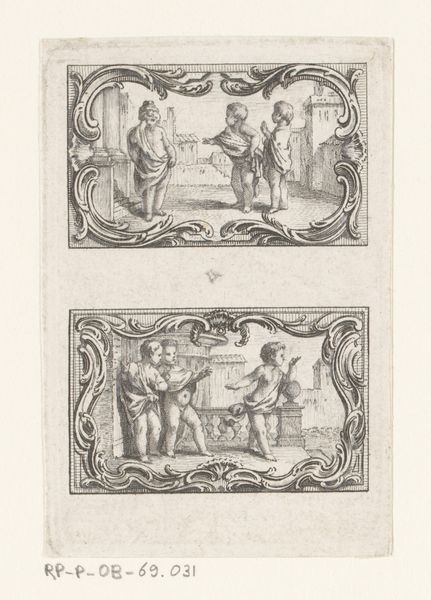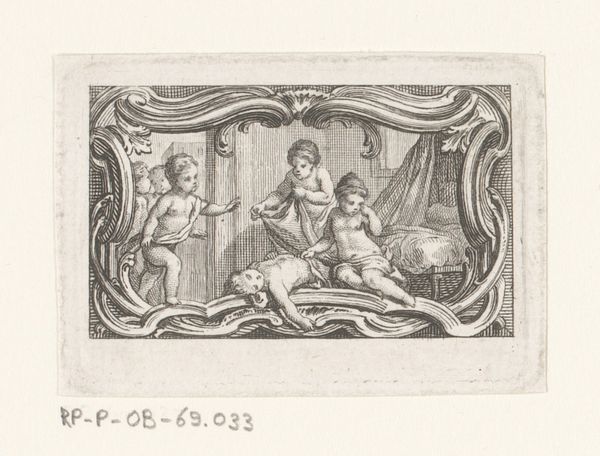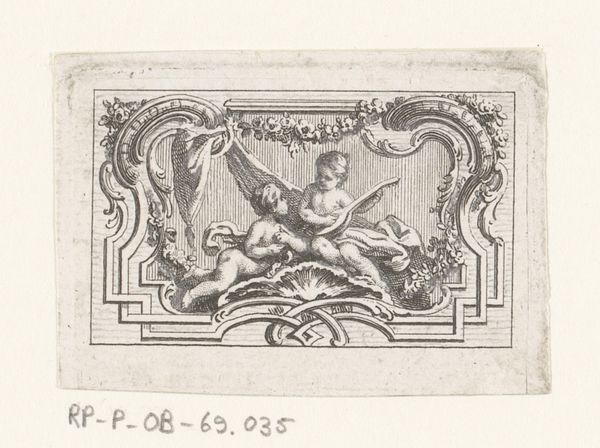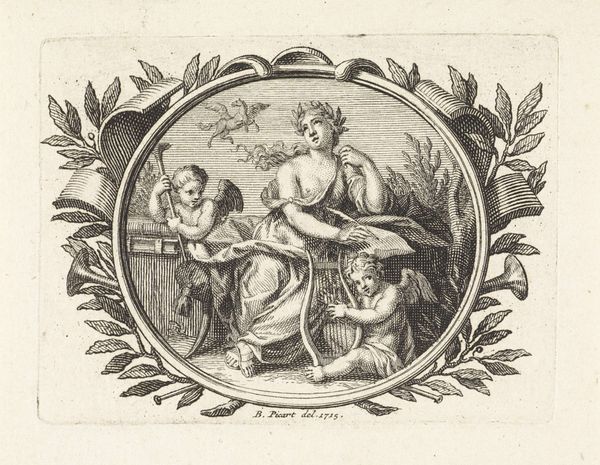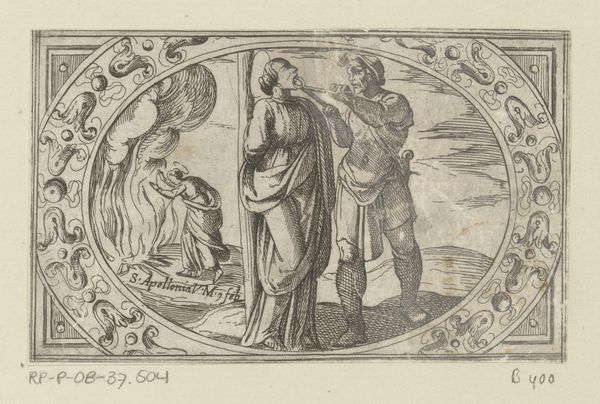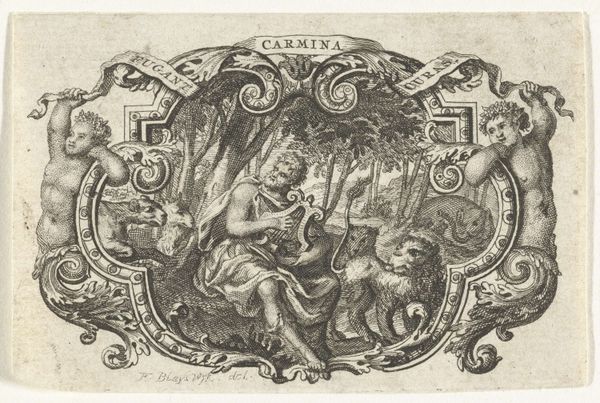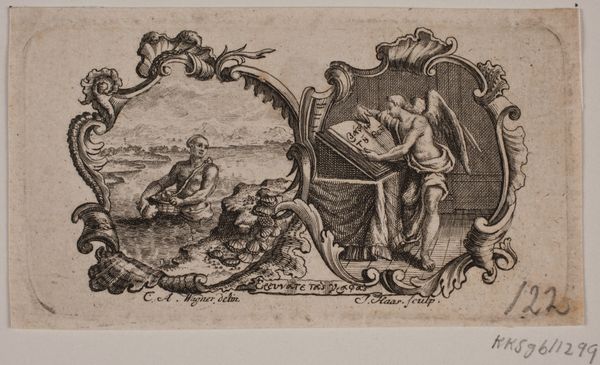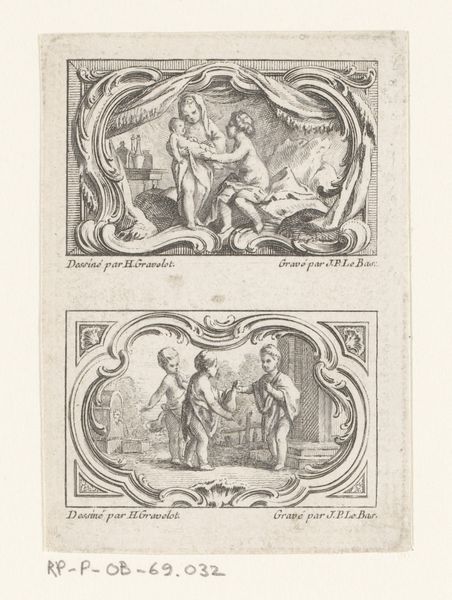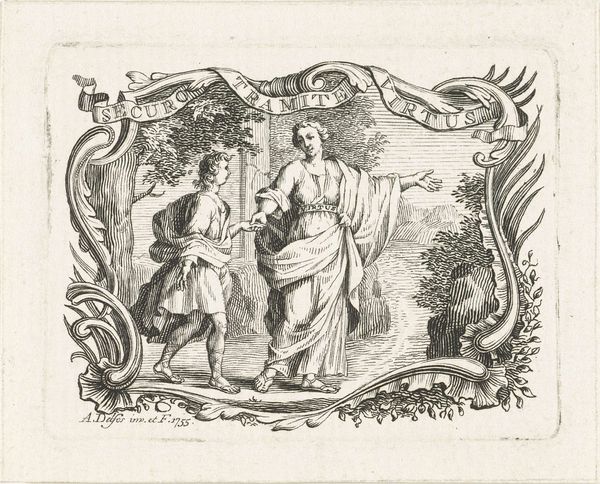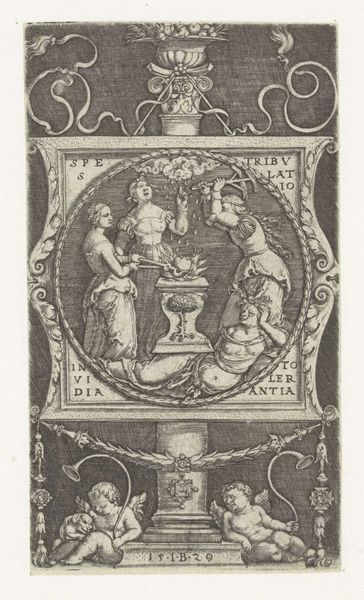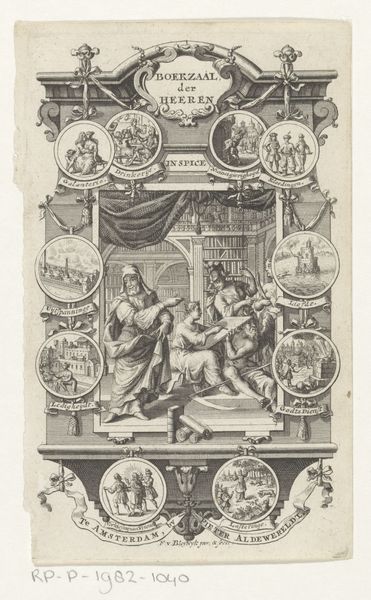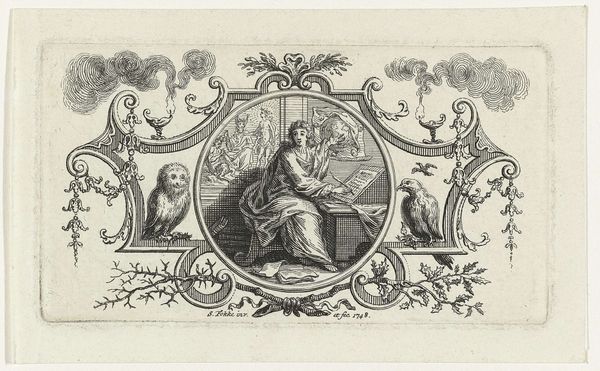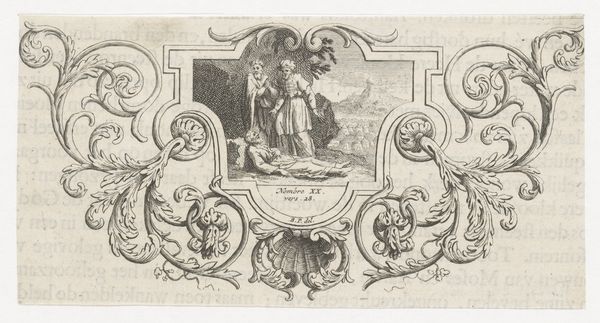
drawing, ink, engraving
#
drawing
#
pen drawing
#
old engraving style
#
figuration
#
ink line art
#
ink
#
pen-ink sketch
#
line
#
genre-painting
#
engraving
#
rococo
Dimensions: height 42 mm, width 60 mm
Copyright: Rijks Museum: Open Domain
Curator: This is a drawing by Jacques Philippe Le Bas, likely made between 1717 and 1783. It's titled "Vignet met wol oprollende en naaiende putti," currently residing here at the Rijksmuseum. It uses ink, pen, and engraving techniques on paper, and it depicts putti engaged in wool work. Editor: At first glance, there's a sweetness to it, isn't there? It's like peeking into a scene of domestic cherubic labor, softened by that elaborate Rococo frame. Curator: Absolutely. What's fascinating is how Le Bas, working within the Rococo period, is deploying these putti, not just as decorative elements, but almost as little emblems of industriousness. It reflects broader 18th-century social ideals regarding the value of work. Editor: Yes, but it’s a highly selective representation, isn't it? These putti aren’t actually experiencing the conditions of labor that, say, children in factories at the time might be facing. It's a sanitised version, conveniently ignoring the socio-economic realities. It obscures, in a way, through idealization. Curator: A valid point. These images were often commissioned by wealthier patrons and served to reinforce the status quo. But, also consider how prints like these circulated; they weren't just visual diversions; they were pedagogical tools reflecting expectations of behavior across different social classes, offering accessible models, even if aspirational ones. Editor: I see that, yes. The image functions almost as propaganda, teaching particular behaviours by masking inequalities in the existing political systems. In that sense, it mirrors the kind of contemporary visual narratives that gloss over labour abuses that serve global capitalism. Curator: Indeed, the parallels across time can be unsettling. The playful rendition serves a larger ideological project. Even art that seems frivolous is bound within complex socio-political forces, which is why it’s vital to examine its place and function within history. Editor: Analyzing Le Bas' print brings a unique understanding of that entanglement: revealing how seemingly innocent imagery participated in legitimizing prevailing powers, then and now. Curator: Exactly. It encourages a reevaluation of our own perspectives, doesn’t it?
Comments
No comments
Be the first to comment and join the conversation on the ultimate creative platform.
